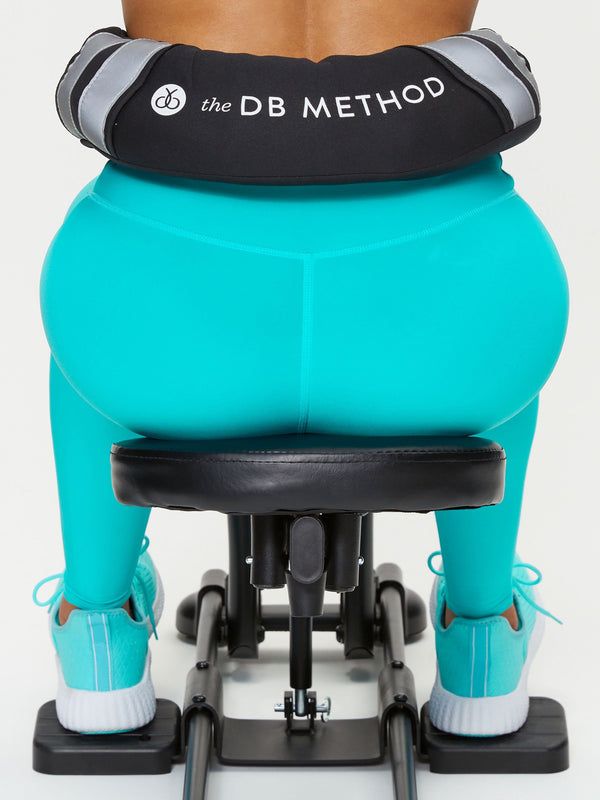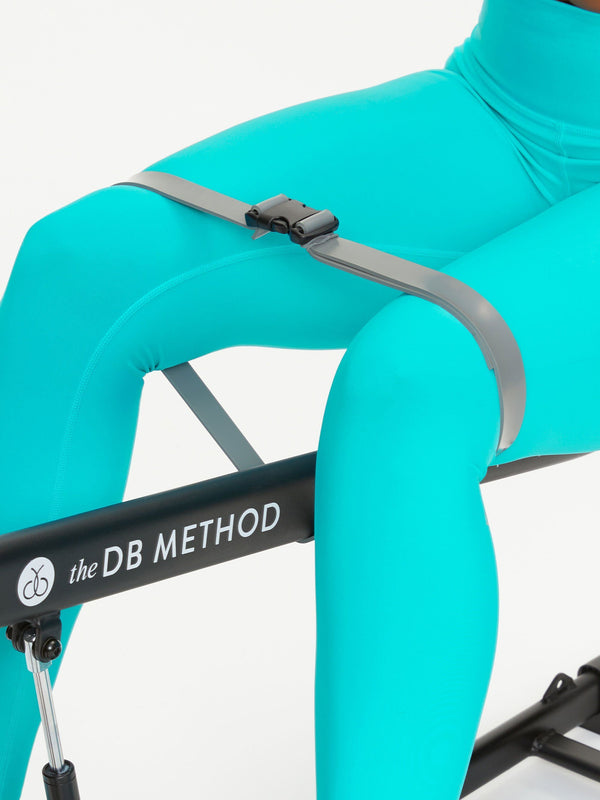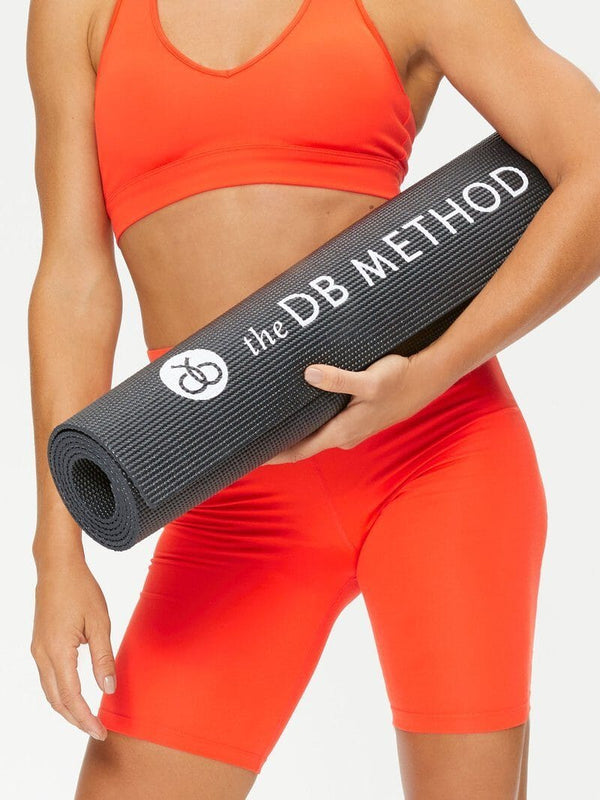Strength training exercises help all types of runners from people looking to blow-off steam, sprinters on the track, and distance runners. It builds explosiveness and speed from your fast twitch muscles for sprinting (source) and can improve the endurance of slow twitch fibers for long distances. (source)
And by knowing which strength training exercises work the correct muscles, you’ll be training to run faster, farther, and even correct muscle imbalances that can lead to injury (source). And as an added bonus, many of the exercises below help to strengthen your core, which is crucial for proper running form and performance (source).
But choosing the right movements to reach your running goals starts with knowing the muscles you need to work. And there are seven primary muscle groups your body uses while running.
- Glutes—important for both speed and distance.
- Quads—major contributor to acceleration and knee extension.
- Hamstrings—critical for speed and knee flexing (heel kicking).
- Calves—key for propelling forward and stabilizing your connection with the ground.
- Hip flexors—crucial to bring your leg forward fast enough for another step so that you don’t fall forward.
- Back/Core/Arms—keeps you standing upright, breathing well, and helps you balance/counterbalance for a regular running rhythm.
- Foot—the 19 muscles in the foot keep you stable and agile against the ground whether it’s flat, or bumpier than the cellulite you don’t have because you’re a strength trainer and a runner.
So, whether you’re training for a marathon or just want to make sure you have the wheels to catch the early bus before it pulls away, these 11 strength training exercises will get you “up to speed” quickly so you’re ready to “go the distance” anytime.
Pro-tip: To add intensity, especially if you’re short on time, add in free weights or weighted vests to increase the challenge.
Lunges
Lunges are a unilateral exercise that targets your glutes, quads, and hamstrings while also engaging your calf and hip muscles. They are great for fixing muscle imbalances and helping to develop coordination for runs on the trail or across the sandy dunes.
- Start the lunge by standing up straight and stepping forward with one leg.
- Lower your body so that your rear knee goes towards the floor and be careful to not let your front knee go past your toes.
- Push off the ground with your front leg and bring your feet back together .
For some extra burn, try exploding up out of a lunge with a jump.
Glute Focused Squat Machines
Glutes have a huge role in running (source), not only powering your strides but also acting as stabilizers for both the knee and trunk while providing overall shock absorption. Squat machine squats that target the glutes (source) can be a great addition to your overall routine, and can be used both for building strength on your off-run days, or pre-run warmups that get the glutes firing.
Heel Raises
Also commonly called calf raises, this exercise targets the calves and foot muscles critical for both speed and endurance (source).
Heel raises are simple to do.
- Stand up straight.
- Raise up on your toes and briefly pause.
- Return to standing.
Beginners can hold onto a chair or brace against a wall to do heel raises with both feet at the same time or one at a time. This way you can keep your balance more easily. If you want to get even more range of motion, do this exercise on the steps so you can stretch your heel(s) below the edge of the step. Make sure there is a railing to hold onto in case you fall off balance.
For advanced athletes that have the balance of a ballerina, hold weights above your head/out to your side/in front of you while doing the raises. This will make your calves workout extra hard and heavily engage the muscles around the foot and ankle. Not to mention you’ll quickly feel the burn in your core and shoulder muscles.
Toe Raises
The muscles in the front of our lower legs don’t get the cultural fanfare that our (back) calves do. But they’re just as important for runners, especially to avoid injuries like shin splints.
Toe raises are as easy as calf raises.
- Stand up straight with your feet flat on the floor.
- Raise your toes toward your chin while keeping your heels on the floor and briefly pause.
- Repeat.
Speed Skaters
Speed skaters are a side-to-side exercise that works your glutes, quads, hamstrings, calves, and hip muscles from a different direction than most other front-to-back or up/down exercises.
- Start standing up straight with most of your weight on your left leg.
- Hop or step to the right.
- Squat to the floor on your right leg as you swing your left leg behind you.
- Swing your arms across your chest to maintain balance.
Try adding ankle weights and wrist weights to get that afterburner type speed.
Jump Rope
Jumping rope is a great way to develop coordination, improve aerobic capacity, muscle reactivity, and plyometric conditioning, all of which have positive effects for your overall running program. Simply warming up with a jump rope has been shown to improve running performance (source).
- Hold one handle in each hand and place the loop of the jump rope behind your heels.
- Swing the jump rope over your head from behind while leaping off of the ground.
- Most people find a double bounce with a small bounce as the rope passes over your head and a larger jump as it passes below you to be easier.
- Land and swing the rope again until your time goal or the amount of jumps in your set has been completed.
It’s easy to increase the intensity of a jump rope workout. You can try a weighted jump rope for a larger emphasis on your arm muscles, and ankle weights for your legs.
Pistol Squats
Like lunges, pistol squats are a unilateral exercise that works all the muscles in your lower body. But these are harder for most people since your entire body weight is supported by only one leg at a time for the entire exercise.
Pistol squats are also great for improving balance as you keep one leg straight in front of you during the squat.
- Stand up straight then lift your left leg in front of you while keeping it straight.
- Squat down on the right leg while keeping the left leg straight in front.
- Try to go down low enough in the squat that your left leg is parallel to the floor.
- Push back up out of the squat and repeat.
Side Shuffles
Side shuffles are an agility exercise that works the muscles throughout your hip and ankles while also working the major leg muscles. You can turn this into a great endurance exercise as well with longer and faster sets.
The side to side nature of this exercise helps develop your lateral movement and coordination that is great for uneven running surfaces as well as sports that take lots of side to side cutting (source).
- Start in an athletic stance by hinging at the hips and keeping your back straight with your knees slightly bent.
- Stay in your stance as you take several small steps to the right and then back to the left.
Resistance bands around your legs can increase the intensity for a tougher workout.
Single Leg Deadlifts
This exercise targets the glutes, hamstrings, and lower back and it’s great for balance and coordination as you have to rotate your entire body over one leg.
- Start with your weight on one leg and the knee slightly bent.
- Hinge your entire body at the hips and rotate forward while keeping your back straight and the other leg behind you straight or slightly bent at the knee.
- Make sure to keep your chest pointed straight at the ground (don’t let your upper body rotate left to right).
- Rotate back to standing.
Scorpions
Scorpions will work your hamstrings, glutes, and the muscles from your hip up into your lower back while giving you a great stretch down your obliques and into your hip flexors.
- Start lying face down with your arms out to the side, palms down.
- Curl your right leg back as you rotate to your left while keeping your chest and palms on the ground (imagine you’re trying to tap your left ear with your right toes).
- Hold for several seconds and then return to the start.
Bent Over Rows
The classic Bent Over Row is a multi-joint movement that targets the lats, traps, rhomboids, and lower back for increased overall postural strength and stability when you run. Research has shown a strong link between upper body strength and running efficiency (source). The beauty of Bent Over Rows is their versatility. You can utilize barbells, dumbbells or even resistance bands, all to great effect.
- Lift the barbell from the rack while bending forward from your hips and keeping your back straight.
- Lower the bar downward with a controlled movement until your elbows are straight.
- Lift the bar towards your belly button while keeping your back straight, and then lower the barbell back down.
Mixing and matching the 11 strength training exercises above to work the right muscle groups will help train you to reach your running goals. Whether they are speed or endurance, or you’re getting into track and field, you’re set with the right movements to keep you “running” right along!








